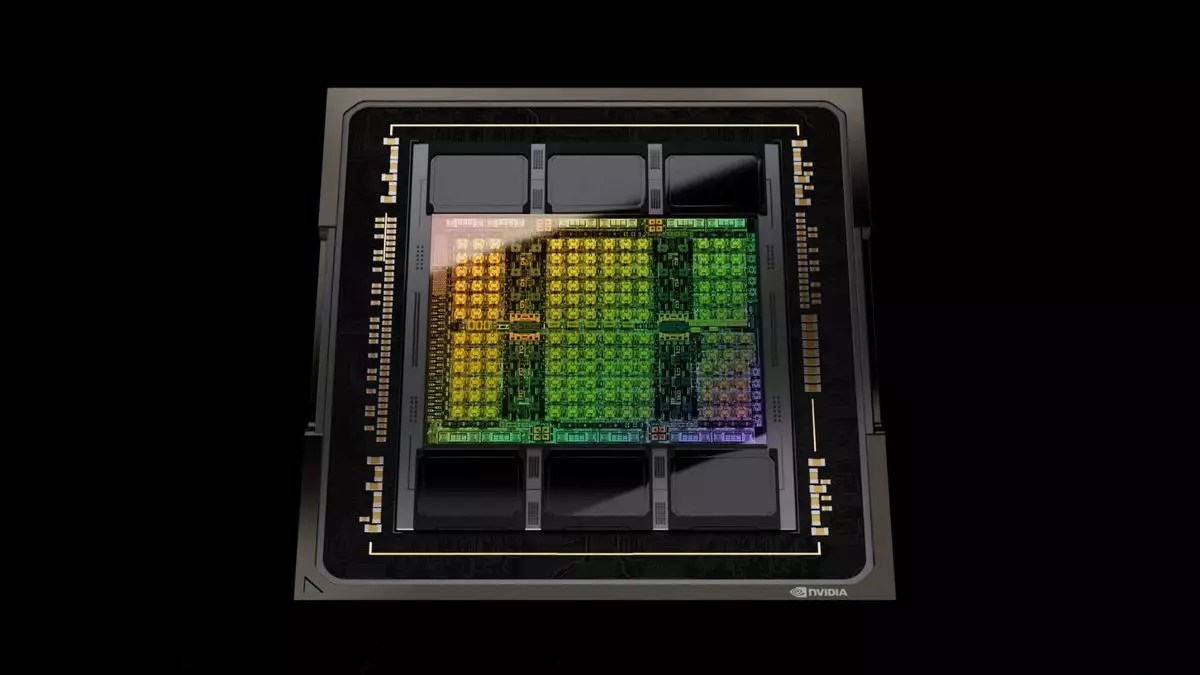Nvidia, known primarily for its high-performance graphics chips for gaming PCs, has successfully ventured into the realm of artificial intelligence (AI) acceleration. What initially started as an experimental offshoot has now become a driving force behind the AI revolution. This development puts the responsibility squarely on society’s shoulders. If we ultimately find ourselves enslaved by artificial overlords, we have no one to blame but ourselves.
In the most recent completed quarter of 2023, Nvidia sold a staggering 500,000 of its H100 AI chips. Research conducted by Omdia estimates the unit prices of these chips to range between $20,000 and $40,000 each, resulting in revenues of $10 billion to $20 billion for Nvidia. Impressively, Nvidia’s data center revenue for the same period amounted to $14.5 billion, falling within the expected revenue range. This level of success is a testament to Nvidia’s dominance in the AI market.
Omdia’s research also sheds light on Nvidia’s biggest customers for its expensive AI chips. Unsurprisingly, Microsoft emerged as a major buyer with 150,000 H100s, translating to a mind-boggling expenditure of nearly $5 billion at the purported average unit price. However, the revelation that Facebook’s parent company, Meta, matched Microsoft’s purchase of 150,000 units piques our curiosity. What exactly are they planning to do with this massive number of AI chips? In comparison, both Google and Amazon reportedly acquired 50,000 H100s in the same quarter, while Tesla’s purchase of 15,000 units still amounted to roughly half a billion dollars. These numbers illustrate the immense financial commitment made by these industry giants.
While the current sales figures are impressive, Omdia projects that Nvidia’s revenue from big data GPUs will double by 2027. Although not all of these GPUs will be dedicated to large language models and similar AI applications, a significant portion will undoubtedly serve these purposes. Interestingly, Omdia remains bullish about Nvidia’s prospects in the AI market, despite the fact that many of Nvidia’s biggest customers plan to develop their own AI chips. Google and Amazon, for instance, have already embarked on this journey, which might explain their relatively lower purchases from Nvidia. Furthermore, AMD’s MI300 GPU and up-and-coming startups like Tenstorrent, led by renowned chip architect Jim Keller, pose strong competition for Nvidia. The AI chip landscape is set to become fiercely competitive in the coming years.
As we delve deeper into the world of AI, it becomes evident that the gaming graphics market is dwarfed by the massive demand for AI chips. The implications of this shift are profound. Society has unwittingly created a technological monster, and there is no reversing its course. The growth of AI and the reliance on advanced computing power is unstoppable. However, we must remain vigilant and ensure that AI development progresses ethically and responsibly, lest we find ourselves at the mercy of the very machines we have created.
Nvidia’s journey from gaming chips to AI acceleration is a testament to the company’s adaptability and foresight. With their H100 AI chips flying off the shelves, Nvidia’s dominance in the AI market seems assured. However, they face formidable competition from industry behemoths and innovative startups. The future of AI is set to redefine our world in ways we can only begin to imagine, and it is up to us to steer this technological revolution in a direction that benefits humanity as a whole.


Leave a Reply